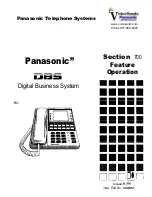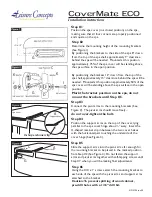
4
n
Abbreviations:
SMAW
– shielded metal arc welding
MAG
– metal active gas welding;
TIG
– tungsten inert gas welding;
MIG
– metal inert gas welding;
SAW
– submerged arc welding
;
PAC
– plasma arc cutting;
PAW
– plasma arc welding.
5. USE PRECAUTIONS:
WARNING!
It is essential to read this manual before
using the welding helmet. Follow site specific OHS
regulations. In the case of any incorrect operation or
doubt as to how to use the helmet correctly, report it to your
supervisor or contact local authorised technical service.
ź
It is forbidden to use the helmet at variance with its intended use.
ź
Always assess operability of the welding helmet prior to work. The
helmet is unfit for use if it has damage, fogged surface,
discolouration, scratches and cracks of the protective glass or helmet.
Replace the helmet or glass with a new one.
CAUTION!
Only genuine
and appropriate parts may be used as replacements.
ź
Select an appropriate filter shade to the type of work that will be
performed.
ź
In the case of any incorrect operation of the helmet, especially auto
darkening filter failure (for example: no darkening, too long
darkening delay, too early clearance), damage to helmet body, etc.
immediately cease work and report the problem to a supervisor or
contact local authorised technical service.
ź
The helmet does not protect against objects at high speed.
ź
The helmet does not protect against corrosive or explosive
substances.
ź
Do not put the helmet or auto darkening filter on hot surfaces.
ź
During operation, keep the external protective plate installed. Using
the helmet without the external protective plate may damage the
helmet and render warranty void.
ź
Replace the external protective glass regularly. Use original glasses.
ź
Avoid positions where spatter and radiation may affect unprotected
body parts (overhead welding). Use additional protection if possible.
ź
Protect the filter against liquids and dirt. Avoid contact with water or
excessive humidity.
ź
Before each use, clean dirt off the helmet and make sure the optical
sensors and solar cells in the front are not obstructed.
ź
Protect the helmet and its components against solvents. Clean with
soft, moist cloth.
WARNING!
Product warranty is void and user's
bodily safety compromised in the case of any
modification of the welding helmet, unintended
use, or failure to follow this manual.
6. BEFORE USE:
The helmet is delivered to you assembled and ready to be used.
Nevertheless, the following is necessary before use:
1. Before the first use of the welding helmet, remove protective film
from the auto darkening filter. Otherwise the shade may be incorrect
or the filter may not work.
2. Make sure the helmet is fit for the planned type of work and that all
components of the helmet are in place, installed correctly and
operational.
3. Adjust the headgear so that it is optimally fitted to the head.
4. Set the sensitivity, delay time, and shade of the welding filter
correctly.
7. HELMET ADJUSTMENT
(see fig.
C
, p. 2)
:
Before use, adjust the helmet to ensure maximum protection and
comfort of use.
Correct adjustment of the helmet provides the maximum protection of
eyes against ultraviolet (UV) and infrared (IR) radiation.
n
Band adjustment
The total circumference of operator's headgear can be reduced or
increased with the knob at the back:
–
To reduce the circumference, press the
A
knob and rotate it clockwise.
–
To increase the circumference, press the A knob and rotate it
counterclockwise.
The circumference is set correctly when the helmet does not fall off
operator's head and it does not exert excessive pressure on the head.
1,5 6
WELDING PROCESS
CURRENT INTENSITY (A)
SMAW
MAG
TIG
Heavy metal MIG
Lightweight alloy MIG
SAW
PAC
PAW
10 15 30 40 60 70 100 125 150 175 200 225 250 300 350 400 450 500 600
8
9
10
11
12
13
14
8
9
10
11
12
13
14
8
9
10
11
12
13
9
10
11
12
13
14
10
11
12
13
14
10
11
12
13
14
15
9
10 11
12
13
8
9
10
11
12
7
6
5
4
where the distance between eyes and weld puddle is about 50 cm and
average light intensity is about 100 lx);
– operator's position in relation to the flame or electric arc. If the welder
leans over the workpiece or has his hands stretched, at least one shade
change is necessary;
– h uman factor (values in the table refer to operators with normal
sight. Persons with sight defects should adjust shade to their needs by
trying out greater or weaker shades);
– i t is recommended to increase shade for outside works in bright
sunlight at least by one degree;
Shade might need to be increased/decreased depending on ambient
conditions.





































